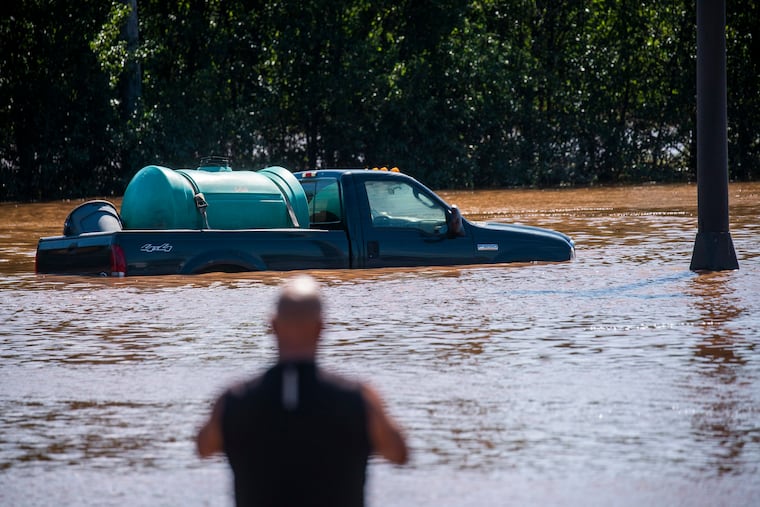New Jersey rainfall has increased a lot more than previously thought, with more to come, studies find
Studies suggest some areas of the state could see 50% higher rainfall than originally thought by 2100.

Two studies conducted by a Cornell University scientist for the New Jersey Department of Environmental Protection show rainfall is already up to 10% higher than expected under older data the state has been using for its climate change guidance.
Further, precipitation is likely to increase by more than 20% from that 1999 baseline by 2100. Some areas could see 50% higher rainfall.
The DEP had been using precipitation data collected from the National Oceanic and Atmospheric Administration from 1950 to 1999 as its baseline. The new studies, led by Arthur DeGaetano, a professor of earth and atmospheric sciences at Cornell, incorporated a longer range of data, from 1950 to 2019, and will be used as guidance for future state regulations and initiatives regarding climate change.
“As we move into a warmer and wetter world, it is crucial that the most recent rainfall observations and state-of-the-art climate model simulations of future rainfall be incorporated into decisions regarding flood potential, infrastructure design and resiliency planning,” DeGaetano, director of the Northeast Regional Climate Center, said in a DEP press release.
DEP Commissioner Shawn LaTourette said the addition of 20 years of data will fill in gaps and help governments, communities, and businesses plan better.
LaTourette said this summer’s tropical-remnant storms Henri and Ida were indicators of how much more frequent and intense storms have already become.
“While New Jersey is ground zero for some of the worst impacts of climate change,” LaTourette said, “this science provides us another opportunity to ensure that our communities become more resilient.”
The first study, focused on hourly and daily precipitation, shows that overall precipitation is already 2.5% to 10% higher, depending on the region of the state, than the 1999 data suggested. And extreme precipitation amounts are 2.5% higher. Some parts of the state have seen a 10% increase above what was indicated by the older data.
Future modeling in the second study suggests precipitation is likely to increase by more than 20% from the 1999 baseline by 2100. In general, those changes will be greater in the northern part of the state than in the southern and coastal areas, with projections for some northwestern counties seeing the greatest increase, some by as much as 50%.
However, Camden County also faces a potentially big increase. The study suggests a 41% to 50% projected increase in rainfall during a 100-year storm — or a storm with a 1% chance of occurring in any given year.
Tropical Storms Henri and Ida were considered 100-year-storms, yet they struck the same general areas less than two week apart in August and September.
The studies were peer-reviewed by a DEP advisory board led by Anthony Broccoli, co-director of the Rutgers Climate Institute.
“One of the consequences of climate change is that we can no longer assume that what has happened in the past is a guide to the future,” Broccoli said. “These studies will provide better guidance for estimating and managing future risks to human life, property, and infrastructure.”
The second report notes that New Jersey, and much of the mid-Atlantic, have already seen “notable increases in extreme precipitation” with a more than 70% increase in the heaviest daily precipitation events from 1958 to 2010.
The data indicate a high likelihood that intensity will increase throughout the century.
“The recent excessive rainfall totals and accompanying tragic flash flooding associated with Henri and Ida suggest that an update … was prudent,” said State Climatologist David A. Robinson. “New Jersey must be better prepared to deal more frequently with such events now and in upcoming years.”